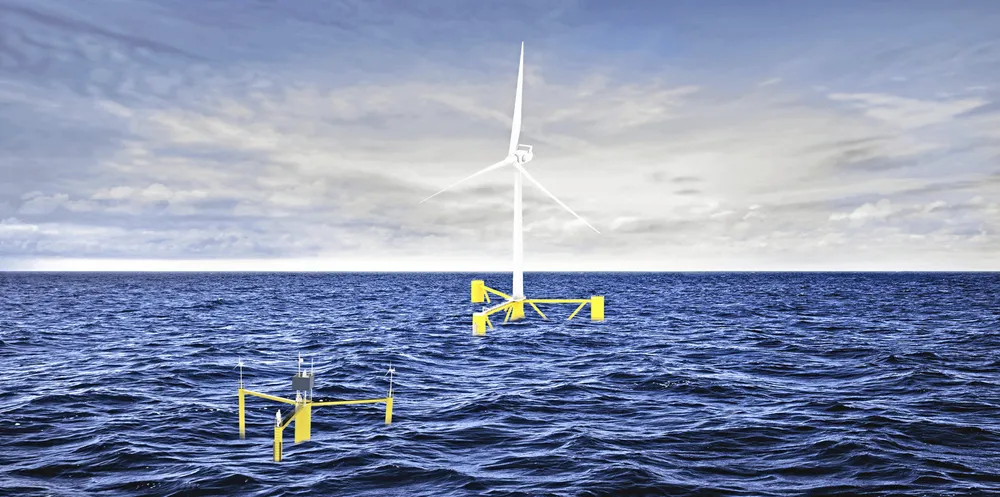Local hero: Chevron-backed floating wind platform 'could be made in Scotland'
Developer signs MoU with Ocergy over technology that is claimed to offer huge benefits to localisation effort

Floating wind foundation technology backed by oil giant Chevron is in the frame to equip the 200MW Salamander project off Scotland, as its developer hailed the potential of Ocergy’s concept to open ports, slash steel requirements by 30%-plus and pave the way for local fabrication.
Salamander developer Simply Blue Energy said it signed a memorandum of understanding (MoU) with Ocergy to evaluate its foundation design for Salamander, which is being advanced in conjunction with offshore oil contractor Subsea7 ahead of this year’s ScotWind leasing round.
Confirming the MoU, Simply Blue said OCG-Wind has “significant potential for commercial scale deployment within the capabilities of the current Scottish supply chain”.
The developer said it plans to unlock access to twice as many Scottish ports as “some traditional floating concepts” thanks to OCG-Wind’s lower draft requirements.
It also envisages “a scalable fabrication and assembly process, suitable for commercial scale deployment”, and “a more than 30% decrease in fabricated steel mass, reducing the cost of energy whilst allowing the potential for local fabrication”.
Hot potato
The developer added: “By supporting the development of new foundation technologies the Salamander project intends to provide a template for the successful construction of floating offshore wind projects within Scotland.”
Local fabrication and the wider offshore wind supply chain is a political hot potato in Scotland, where unions have regularly slammed the level of work leaving the devolved UK nation during the handful of major fixed-foundation projects built there so far.
Salamander is seen as a “stepping-stone’ to bridge the gap between current demonstrator projects and the future commercial projects leased in the ScotWind process”.
Lower LCOE
By its calculations, a 10MW unit based on the Ocergy platform concept could generate power at a levelised cost of energy (LCOE) as low as $50/MWh from “large wind farms with good wind resource and favourable environmental conditions” – an LCOE that would bring floating down to a level on par with conventional fixed-foundation offshore wind.
OCG-Wind is already in line to deploy as a 10MW prototype at the site of the Shell/Ocean Winds Mayflower project off Massachusetts.
Along with France’s first tender which launched in the last few days, ScotWind is set to act as global pioneer for floating wind developers and technologies, and is the first in the world’s to offer leasing in waters suitable for both fixed-foundation and floating turbines.
Scotland is already the world’s first two floating arrays – Equinor’s already-operating 30MW Hywind and the 50MW Kincardine project that is under construction now.
(Copyright)